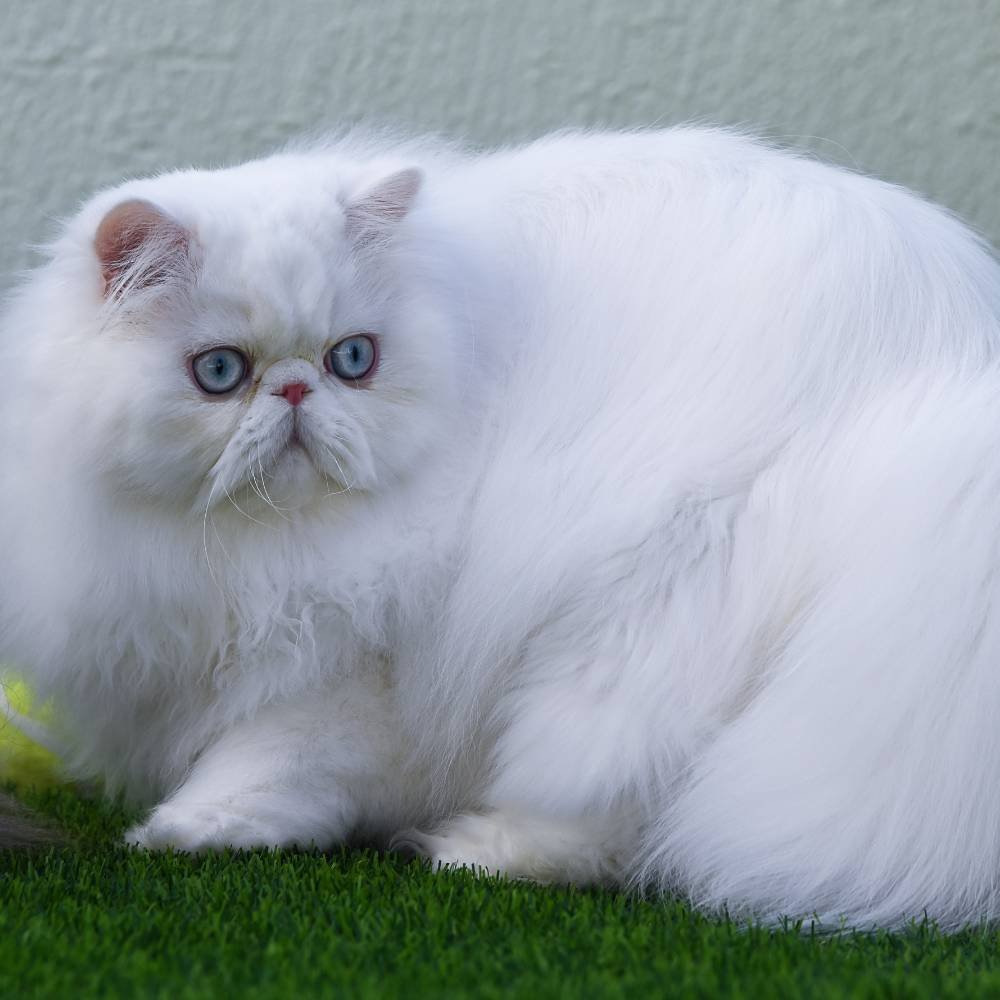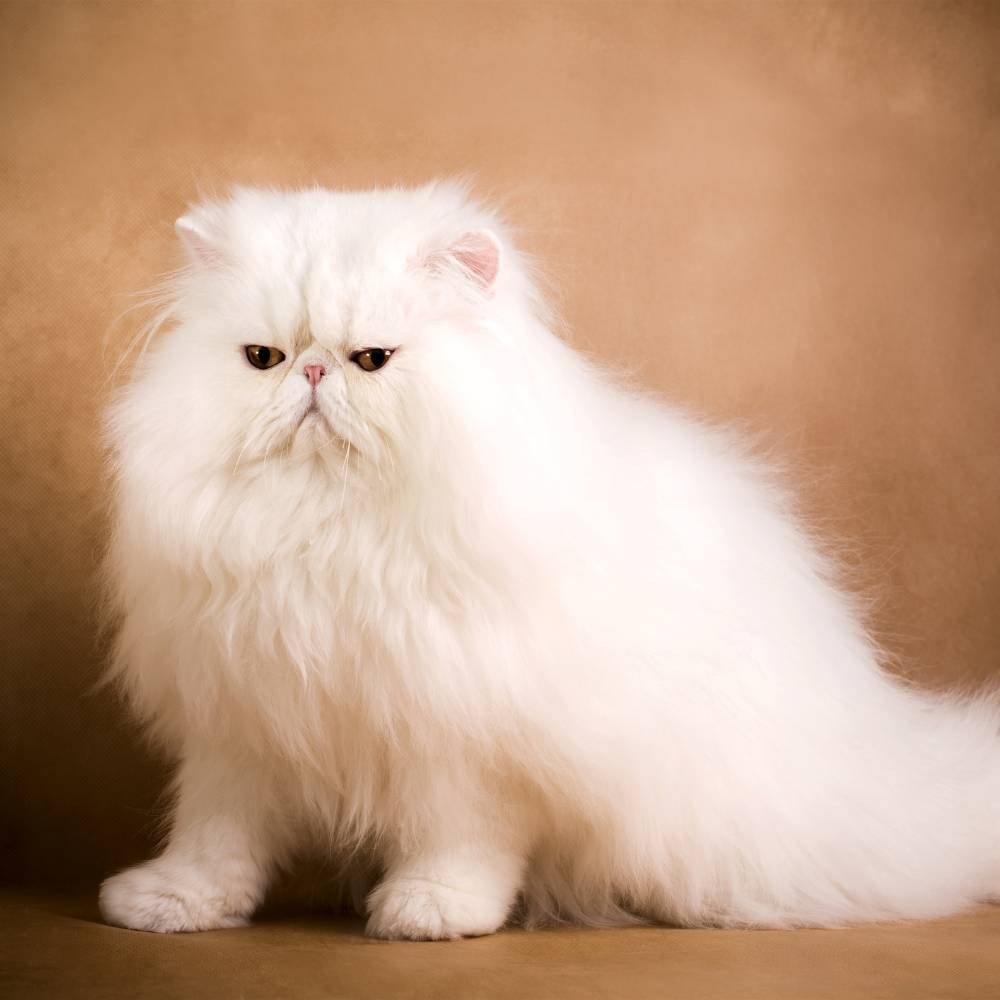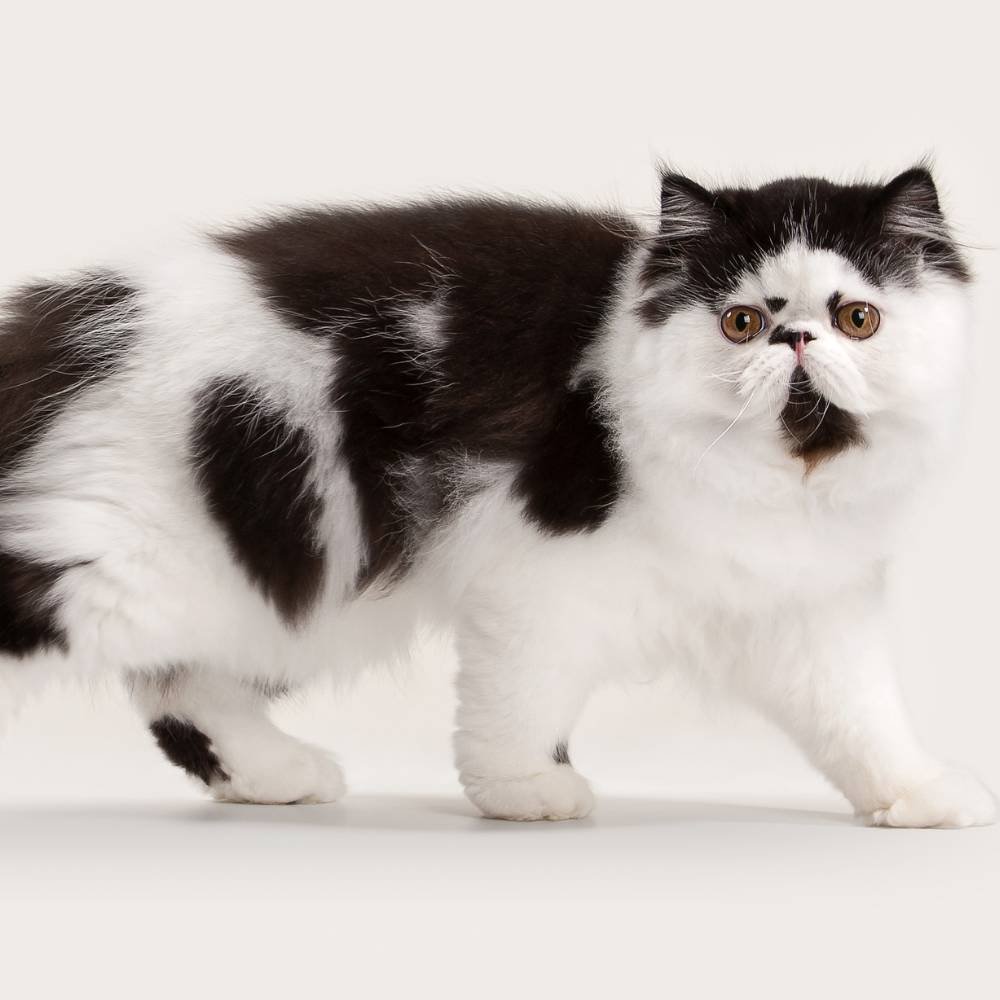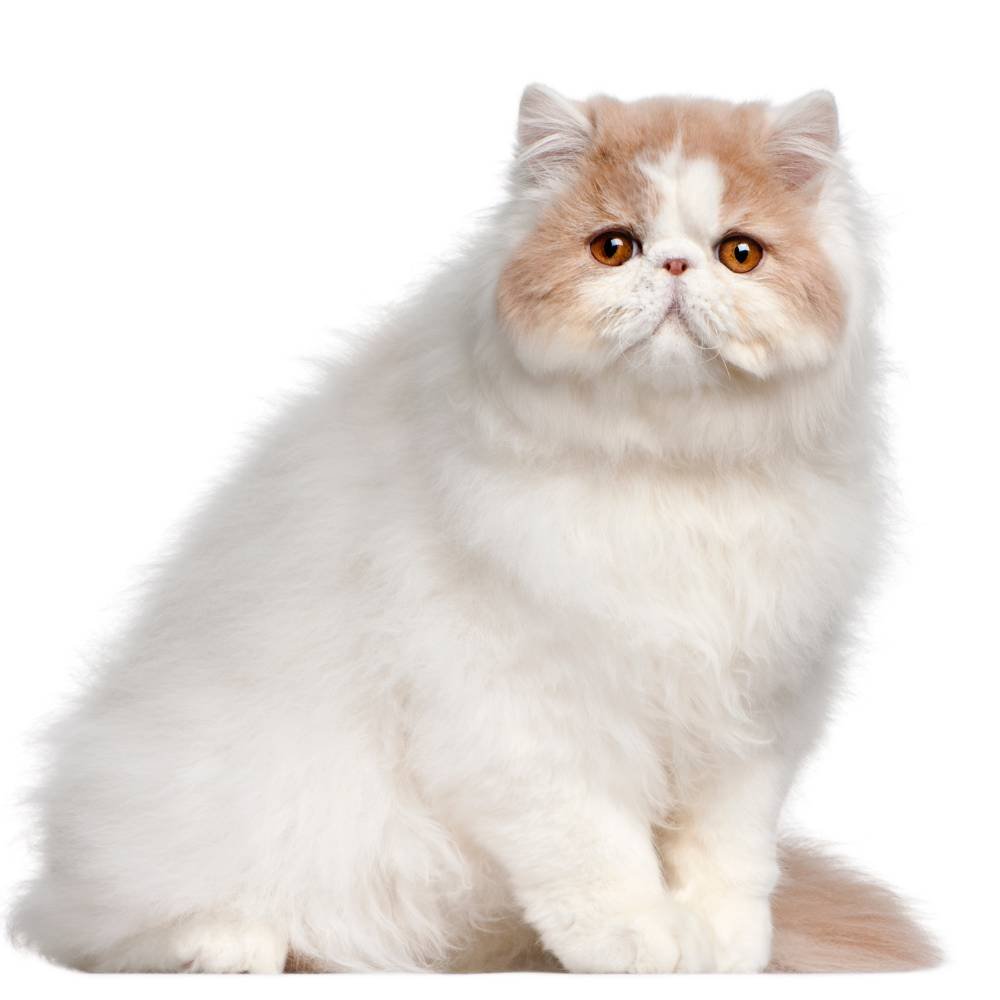
White Persian cats are just like other Persian cats. They have the same personality traits, the same luxurious coats, the same health issues, and need the same care, with some exceptions unique to white-furred cats.
There are a variety of white fur types. Some Persian cats are white because they were born with little or no melanin pigmentation.
Melanin is the gene mechanism that produces color. Without it, a cat’s coat will be white, and the skin and eyes will be pale or colorless, as scientists call it. Three gene mutations produce white kittens.
1. Albino gene or Albino White Persian cats are born with no melanin pigmentation. These Persians are extremely rare. A true Albino White has pink eyes and skin coloring. Albinism isn’t connected to deafness.
2. Epistatic gene is referred to as Dominant White. This gene produces white Persian cats with blue, orange, or odd color eyes. This mutation is also most closely related to deafness. These cats can have deafness on the same side that they sport a blue eye, meaning if they have two blue eyes, they can be completely deaf.
3. The Piebald gene, or Complete White Spotting gene, occurs when a Persian cat carries a dominant spotting gene. This gene gives a colored cat white spots among their color. So, you can end up with a black and white, red and white, blue and white spotted Persian cat because this gene doesn’t cover the cat completely in white masking. The Piebald gene is not linked to deafness.
With these genes in mind, here are some percentages of white cats to give you an idea of how many white Persian cats may exist.
Five percent of the cat population includes pure whites. Fifteen to forty percent of that small population have one or both blue eyes. Sixty to eighty percent of pure white cats with one or both blue eyes may be deaf. Of the pure white cats, sixty to eighty percent have green or orange eyes, and twenty percent are deaf.
How to Care for a White Persian Cat with Special Needs
Blindness in white cat breeds
Many people mistake that blue-eyed white Persian cats are blind rather than deaf. Blindness is not a factor in the white cat. Deafness can occur in the Epistatic White Persian as deafness is somehow linked with the fact that they are white with blue eyes because of the Epistatic gene. So, the reality is that your white Persian cat can become blind, but it isn’t because of the gene that makes them white or partially white.
If you suspect your Persian cat may be losing her eyesight, there are a few things you may notice, such as:
1. Bumping into items such as furniture and walls.
2. Difficulty finding their dishes or other familiar objects.
3. Your cat crouches closer to the ground when walking to navigate floors with their nose or whiskers.
4. If your cat becomes more vocal, it can signify distress or fear.
5. They move around less, staying in one spot more.
6. They become clingy.
7. Look at your cat’s eyes. If you notice any changes in your cat’s pupils, such as they are different sizes or don’t change when in bright light or going from sunny to dim.
8. Check your cat’s menace reflex or eye responsiveness. You can do this by dropping a cotton ball in front of them. They should react, even if it’s to blink their eyes, indicating they saw the item fall.
Deafness in White Persian Cats
Scientists have linked blue eyes with a likelihood of hearing loss in white Persian cats. Cats born with the dominant white gene mutation are more prone to lacking melanin-producing cells, which create color for the eyes and skin. These cells also create a layer in the inner ear essential for hearing. If they don’t have melanin-producing cells, they may be deaf, as lacking melanin is considered colorless in the scientific world. Without these cells, your white Persian cat may be deaf.
Not all white cats with blue eyes are deaf. However, science has proven that many white cats with at least one blue eye are deaf.
Veterinarian studies show that sixty-five to eighty-five percent deafness occurs if the white cat’s eyes are both blue. There is a forty percent chance of hearing loss if the cat has only one blue eye. There is a seventeen to twenty-two percent chance of a white cat with non-blue eyes having hearing loss.
White cats must inherit a particular gene or gene complex to be diagnosed as deaf. To ensure a white cat’s hearing health, a veterinarian should check their ears to confirm their hearing status.
Cancer in White Persian Cats
Limit time in the sun to keep your white kitty as healthy as possible. White cats have susceptible skin due to no melanin production, so keeping her indoors is essential.
- Sunburn – Just like fair-skinned people burn quicker in the sun, so will a fair-color-coated pet.
- Cancer – White Persian cats’ pale ears, noses, and eyelid skin are susceptible to skin cancer. Red, dry ulcerated spots indicate your white Persian cat has skin cancer. This condition could be fatal for your feline, so have your veterinarian check your cat’s skin.
White Persian Cat Coats

When you think of White Persian cats, you probably envision a pure white, fluffy living cloud with blue eyes. However, there are other white coats you may not think about because of what you expect. The white gene can sometimes have mutations that allow another color gene to show.
White-spotted cats
White-spotted cats also called piebald or bicolor, are cats with any quantity of white on them, but aren’t entirely white. The white spots can be limited to a locket on the chest or just some white mittens, up to an almost wholly white cat except for its ears and tail.
In a way, you could say that white is an absence of color that erases the standard color of the cat.
If a patch of white covers the cat’s nose or paws, the leather color will be pink. When a white patch covers an eye, it may cause that eye to be blue. That’s why most odd-eyed cats are white or have white spots. Generally, cats with any amount of white are called by their base color plus with white when the amount of white is not specified.
Tortie cats, which also have white, are called calicos. Generally, the more white a tortie cat has, the more black and red fur patches are separated.
Some breeds have names for the color repartition, such as the Ragdoll, Snowshoe, or Turkish Van.
Mitted
Mitted cats, sometimes called gloved, only have white on their paws as if they were wearing white socks.
Bicolor

Cats are bicolor when a white area covers forty to sixty percent of their body. Generally, the white parts of a cat’s coat are located on the legs, belly, chest, and face. Other colloquial names sometimes used for bicolor cats based on their color repartition are tuxedo, cap-and-saddle, and mask-and-mantle.
Harlequin or High White
In most pedigree registries, cats between sixty to eighty percent white are called Harlequin or, sometimes, high white. Generally, a Harlequin cat is colored only on the head, tail, and a few patches of color on the back and body.
Van
Cats whose body is more than eighty percent white are called a van. In this case, the only non-white parts are the ears and the tail, which can make it challenging to identify the base color of the cat.
White color genetics
Some definitions may help you with some of the words in this section.
Chromosome
A chromosome is a structure of nucleic acids and proteins found in the nucleus of cells, carrying genetic information in the form of genes.
Genotype
A genotype is the genetic constitution of an individual organism.
Heterozygote
Having two different alleles of a particular gene or genes gives rise to varying offspring.
Homozygote
An individual has two identical alleles of a particular gene or genes, so breeding is valid for the corresponding characteristic.
KIT gene
This gene is responsible for white coat combinations in cats. There are several variants of the KIT gene.
1. Wild type (w) allele. The w allele is a recessive variant of the gene. That means it will only be expressed in homozygotes—cats who inherit the allele from both parents. Homozygotes for the wild-type allele will not have any white in their coat, and other color-associated genes will shape their coat color.
2. Dominant white (WD). The dominant white allele can express in homozygotes and heterozygotes. This gene causes total white regardless of any other color genes. It masks any influence from other color genes. The masked color may be present in the offspring of heterozygotes. The dominant white gene disrupts the replication and migration of melanocytes or cells that create dark pigment in the skin, and it has also been linked to blue eyes and an increased risk of deafness.
3. White spotting (piebald) (WS) variant. The piebald allele shares dominance with the KIT gene. That creates the formation of white spots or patches on the coat. Dominant homozygotes (WS/WS) typically express extensive white patching compared to heterozygotes (WS/ws). Recessive homozygotes (ws/ws) don’t show white spots in their coat.
Locus
Locus is a specific gene’s physical site or location on a chromosome.
Nucleus
The structure of a cell that contains the chromosomes.
Phenotype
A phenotype is a set of observable characteristics resulting from the interaction of its genotype with the environment.
White and white spotting phenotypes are linked to the same locus of the KIT gene. The KIT gene is associated with the white color in many animals. This locus has three possible alleles, W, ws, and w. The white or white dominant W is dominant to the other alleles and any other color gene. The white gene masks the effect of any other color gene. That is called epistatic. The ws allele is responsible for white spots and shares the allele w for a Persian cat without white spots.
A cat with W/W, W/ws, or W/w alleles will be all white, regardless of the other color genes. As the white spotting allele ws is codominant with the w non-spotting allele, a Persian cat that is ws/w will have white spots covering a smaller area of its coat compared to a homozygous ws/ws who will have more or more prominent colored spots. Homozygous cats seem to have more than half of their body covered in white, while heterozygous have less than half. Some additional polygenes may influence this quantity of white and its repartition. A w/w Persian cat will be a solid color with no white.
Other alleles affect a Persian cat’s coat making for some interesting markings that aren’t as cut and dry as the W, ws, or w alleles, making the white on a Persian cat no simple matter. Some of the odd alleles are unknown. The minimal white spotting, such as the locket, a small white spot on a cat’s chest, seems linked to another gene.

Conclusion
There you have it—some interesting facts about white Persian cats. While the white Persian cat is just like any other color of Persian cat, they have differences in how their fur color is produced. We hope you learned something about white Persian cats and enjoyed this article. Did this help you understand why your white Persian is white? Or perhaps you have a deaf fur baby and weren’t sure whether the idea of a white Persian cat being deaf because they are white is unbelievable. Now you have an answer. If you liked our article, please leave any questions or comments below.